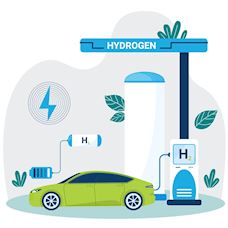
Navigating the rise of technology in construction
In this article we’ll dive into the booming world of smart construction technology, exploring the innovations driving the change and what the future looks like for the industry.

The environment and our impact on it has been on everyone’s mind over the last few years, and that’s whether you’re making a conscious effort to reduce your personal consumption or are involved in making transformational changes at work. As green claims and promises have quickly become part of normal advertising, the UK Competition and Markets Authority (CMA) has stepped in to protect consumers, and in order to prevent much discussed ‘greenwashing’ it has created a new piece of guidance called ‘The Green Code’.
What you need know
Although foremostly aimed at the B2C market, this guidance also has ramifications in the B2B world. It means that any environmental or sustainability claim needs to be backed up with facts. Most importantly organisations should not omit or hide important information and they must consider the full life cycle of the product when making any claims.
Claims made around any aspect of the product suggesting it’s sustainable, environmentally-friendly or similar need to be substantiated and the evidence for these claims should be easily accessible for all to find. Ideally with a direct link or path to this information in the place where the claim is made.
This means that when working on any campaign that includes a green claim some due diligence needs to be done to ensure it is true and that you are able to include substantiation or direct people to the relevant proof of these claims. This also applies to campaigns which you may have already created and are currently live, so you’ll need to review what you have out there.
The claim should only be made if you can answer ‘yes’ to all of the following checklist questions: https://www.gov.uk/government/publications/green-claims-code-making-environmental-claims/green-claims-and-your-business#green-claims-checklist
This guidance applies to all claims by all types of supplier, be they manufacturers, wholesalers, distributors or retailers. The claims may be about goods or services, components or particular aspects of them. They may be about a process, a brand or business as a whole. The guidance is also relevant to organisations who produce codes of practice and to third parties who develop certification schemes.
As mentioned above, this new guidance is mostly designed to protect consumers. For the B2B world, it is a little more vague, but includes the statement ‘The CMA urges all businesses to act fairly in their transactions with other businesses’, so the guidance still applies to all B2B marketing communications and transactions.
This guidance was only created in January 2022, making it still very new, so there will likely be a period of adjustment. However, responsibility for any such claims lies with the company themselves and it is therefore vital that you are aware.
It is essential that all suppliers of components, materials, tools, or other items and services across the entire supply chain are clear, honest and transparent. As we all aim for a brighter, greener future, it is important that we create strong communications and advertising giving credit where credit is due. This is a chance for those with great green credentials to stand apart and be proud of the green claims they can fully justify.
For help with your environmental claims and communications, please contact r.arquati@clearb2b.com to discuss how we can help



In this article we’ll dive into the booming world of smart construction technology, exploring the innovations driving the change and what the future looks like for the industry.

Learn how to use presentation opportunities as an effective lead-generation tool in your trade show activity.

Great marketing success comes from keeping your communications focused, engaging and simple to ‘get’ - but that isn’t always so simple to achieve.

With multiple types of technologies being considered, we bring you a snapshot of alternative fuels and review the most prominent pros and cons for each one.